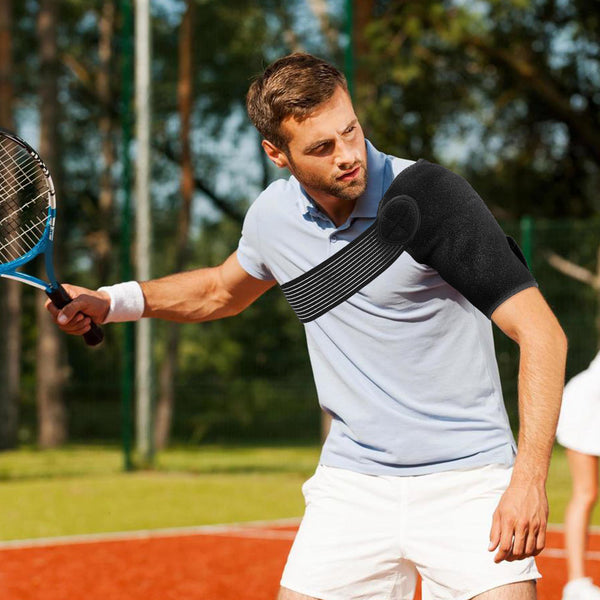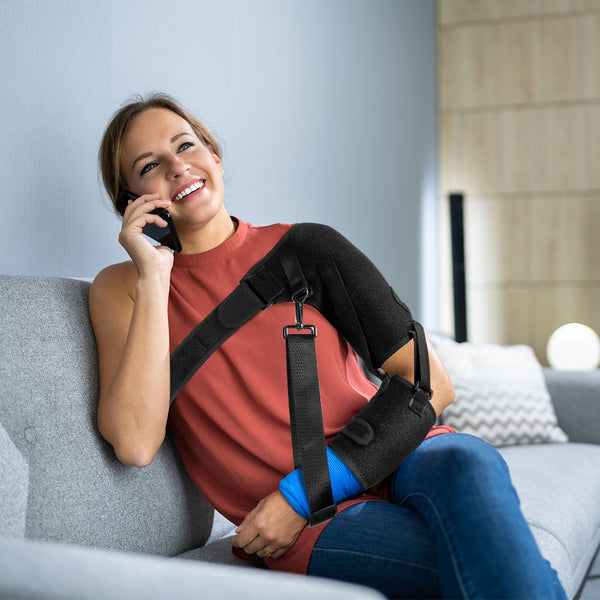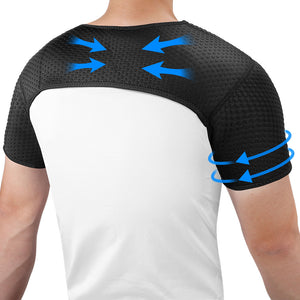What Are the Different Types of Female Shoulder Brace

We have four types of that Fivali has released which are classified as compression type, shoulder sleeve support type, sports-specific type and shoulder repositioning type.
Compression Type
Compression shoulder supports made of wave point shock-absorbing fabric can offer that all-around instant support for the shoulders; ultra-thin designed to fit all you just wear and adjust in comfort so that perfectly fits your shoulders as per requirement during daily sports and fitness workouts.
The Shoulder Health Journal reported that compression shoulder braces reduced muscle soreness of the shoulders after a 72-hour period and increased exercise performance by an average of 15% vs. without the brace during moderate-intensity training. A study from Occupational Health Magazine showed that women wearing for extended periods have a 40% less prevalence of shoulder pain than those not wearing the braces.
Shoulder Sleeve Support Type
Shoulder Sleeve support Brace Shoulder sleeve region, precise compression and concealing braces are fixed by a variety of straps. It is great for anyone with shoulder sleeve tears, tendonitis or chronic shoulder strain.
Compared with traditional braces, clinical studies have shown that the shoulder brace can reduce the cumulative second tear rate to 30%during follow-up, which is higher than the risk reduction rate of traditional braces by up to 15 times. Moreover, 90% of users said that the brace helps a lot to stabilize your shoulder.
Sports-Specific Type
In terms of performance, sports-specific braces primarily incorporate lightweight materials with good shoulder mobility design that are acceptable for high intensity sport settings. They have adjustable shoulder straps construction with elastic type material for stability and range of motion during shoulder movement.
Clinical data demonstrates a 42% reduction in shoulder dislocations among female athletes who wear . In accordance with some statistics from the Journal of Sports Medicine, shoulder sleeve injuries in sports that require fastened movements such as badminton and tennis have decreased by around 35%. This style of brace incorporates even more of an anti-slip feature that reinforces the stability pf the brace for rigorous activity, making it also great for performance in addition to safety.
Shoulder Repositioning Type
During the rehabilitation period of shoulder dislocation following, to control shoulder abduction range of motion limit the position of lead should can maintain, benefit from early repair joint capsule and prevent secondary dislocation and do not make muscle atrophy, general repositioning braces are needed which is usually adjustable. Such a Shoulder typically offers high-strength materials to ensure adequate support for repositioning.
Research data from the Rehabilitation Medicine Center shows that using a reduction brace for rehabilitation treatment can reduce the shoulder dislocation rate from 20% to 8%, significantly improving the success rate of rehabilitation.
-
Posted in
Joint, Recovery, Shoulder pain

















